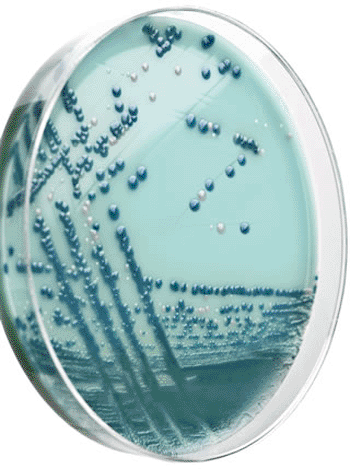New Medium Launched for Carbapenem-Resistant Enterobacteriaceae
By LabMedica International staff writers
Posted on 14 Dec 2011
A medium was designed to make it quicker and easier to screen for and detect carbapenem-resistant Enterobacteriaceae (CRE).Posted on 14 Dec 2011
The Brilliance CRE agar can be used by laboratories to screen patient samples for CRE. The Oxoid (Basingstoke, United Kingdom) Brilliance CRE agar provides clinicians with results in around 18 to 24 hours, enabling them to start infection control measures sooner. The Oxoid Brilliance CRE agar is claimed to be easier to use and read than the Hodge test that is traditionally used to detect resistance to carbapenems.

Image: Carbapenem-Resistant Enterobacteriaceae (CRE) (Photo courtesy of Oxoid).
The spread of infections by resistant bacteria such as CRE can only be stopped by rapidly identifying and isolating hospital patients who are infected with the resistant strain.
Brilliance CRE agar contains a modified carbapenem, at levels recommended by both the Clinical Laboratory and Standards Institute (CLSI) and Eucast, ensuring reliable detection of numerous CRE strains, including those with the New Delhi metallo-β-lactamase 1(NDM-1) mechanism of resistance.
Chromogenic compounds in the agar medium differentiate between resistant Escherichia coli (pink colonies) and Klebsiella, Enterobacter, Serratia, or Citrobacter (KESC) organisms (blue colonies). The colonies of other resistant organisms appear white and are easy to spot against the novel pigmented agar.
Carbapenems (imipenem, meropenem, ertapenem, and doripenem) are invaluable for the treatment of infections due to multiresistant Gram-negative bacteria, including producers of extended-spectrum-lactamases. However, the rapid emergence and dissemination of Enterobacteriaceae that are resistant to carbapenems poses a considerable threat to clinical patient care and public health. Early detection of carbapenem-resistant Enterobacteriaceae (CRE) will allow faster implementation of appropriate strategies to limit the spread of these pathogens.
Related Links:
Oxoid
Clinical Laboratory and Standards Institute













